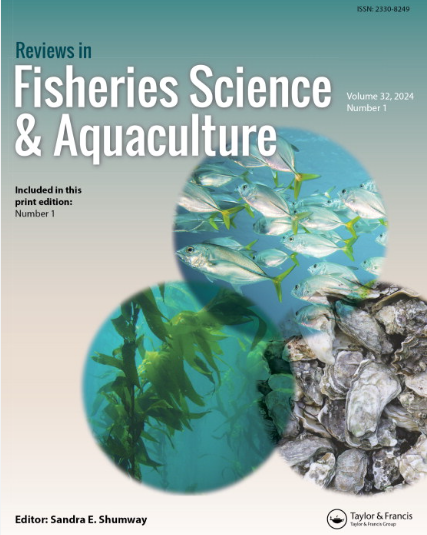层系理论在水生入侵物种管理中的应用——以入侵彩虹臭鼬为例
IF 5.3
1区 农林科学
Q1 FISHERIES
引用次数: 5
摘要
物种入侵是一个全球性的问题。入侵物种建立后,它们通常会破坏生态系统,导致新的动态和物种相互作用,使管理工作变得困难。Panarchy理论是一个概念框架,用来解释所有复杂系统在不同时空尺度上的双重和看似矛盾的特征(稳定性和变化)。通过创建表征复杂自然系统的框架,Panarchy理论有可能被应用于更好地洞察入侵系统动力学。该框架允许管理行动(例如,全湖生物操纵,入侵物种控制,本地物种恢复)与自然和诱导的生态系统过程相结合,提供更大的预期结果的可能性。本文以彩虹臭鼬为例,将层次理论应用于入侵物种管理。首先,综述了泛群理论以及彩虹香在内陆湖的入侵历史和后续生态效应。其次,回顾了彩虹臭的根除和控制工作,以更好地了解导致长期成功或失败的机制。最后,运用层次理论讨论了入侵湖泊未来的控制和(或)本地物种恢复工作。本文综述了入侵的彩虹臭对一些本地生态系统的负面影响。控制和(或)根除入侵彩虹鱼的努力是否成功取决于:1)清除足够的彩虹鱼以破坏其生态位空间;2)缺失的生态位空间被剩余种群或通过放养的方式填充。本文认为,控制入侵物种和(或)恢复本地物种的成功概率可能取决于巢式适应周期的四个阶段(生长、保护、释放和重组),即在释放阶段通过管理干预。整体理论的应用应被视为利用食物网和生态系统背景(即“食物网思维”、基于生态系统的渔业管理)来恢复生态系统和(或)管理渔业的努力的概念延伸。本文章由计算机程序翻译,如有差异,请以英文原文为准。
Applying Panarchy Theory to Aquatic Invasive Species Management: A Case Study on Invasive Rainbow Smelt Osmerus mordax
Abstract Invasive species are a global concern. After an invasive species establishes, they often disrupt ecosystems leading to new dynamics and species interactions, making management efforts difficult. Panarchy theory is a conceptual framework to account for the dual and seemingly contradictory characteristics (stability and change) of all complex systems across distinct spatial and temporal scales. Panarchy theory has the potential to be applied to gain better insight into invaded system dynamics by creating a framework to characterize complex natural systems. This framework allows for management actions (e.g., whole-lake biomanipulations, invasive species control, native species restoration) to be leveraged against natural and induced ecosystem processes, providing a greater probability of desired outcomes. In this review, panarchy theory is applied to invasive species management using rainbow smelt Osmerus mordax as a case study. First, panarchy theory and the invasion history and subsequent ecological effects of rainbow smelt in inland lakes were reviewed. Second, rainbow smelt eradication and control efforts were reviewed to better understand mechanisms that led to long-term success or failure. Last, panarchy theory was applied to discuss future control and(or) native species restoration efforts in invaded lakes. This review found that invasive rainbow smelt cause negative effects on some native ecosystems. The success of invasive rainbow smelt control and(or) eradication efforts depended on whether: 1) enough rainbow smelt were removed to devoid their niche space; and 2) devoid niche space was filled with desired native species from remnant populations or through stocking. This review suggested that the probability of successful invasive species control and(or) native species restoration may be dependent on the four phases of the nested adaptive cycle (i.e., growth, conservation, release, and reorganization) through management intervention during the release phase. The application of panarchy theory should be viewed as a conceptual extension of efforts to restore ecosystems and(or) manage fisheries using a food web and ecosystem context (i.e., “food web thinking”, ecosystem-based fisheries management).
求助全文
通过发布文献求助,成功后即可免费获取论文全文。
去求助
来源期刊

Reviews in Fisheries Science & Aquaculture
FISHERIES-
CiteScore
25.20
自引率
0.90%
发文量
19
期刊介绍:
Reviews in Fisheries Science & Aquaculture provides an important forum for the publication of up-to-date reviews covering a broad range of subject areas including management, aquaculture, taxonomy, behavior, stock identification, genetics, nutrition, and physiology. Issues concerning finfish and aquatic invertebrates prized for their economic or recreational importance, their value as indicators of environmental health, or their natural beauty are addressed. An important resource that keeps you apprised of the latest changes in the field, each issue of Reviews in Fisheries Science & Aquaculture presents useful information to fisheries and aquaculture scientists in academia, state and federal natural resources agencies, and the private sector.
 求助内容:
求助内容: 应助结果提醒方式:
应助结果提醒方式:


